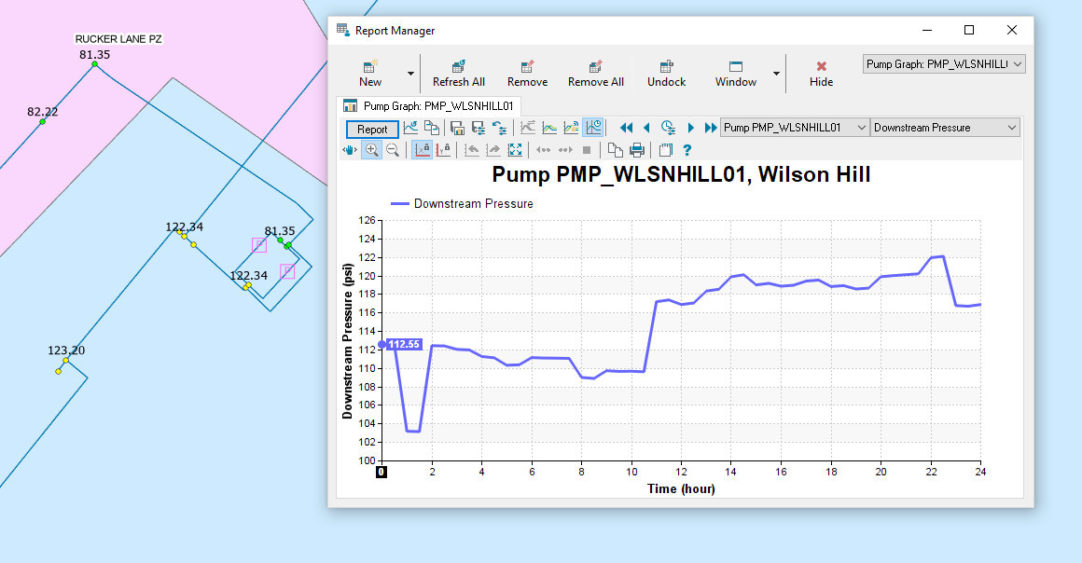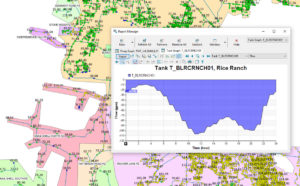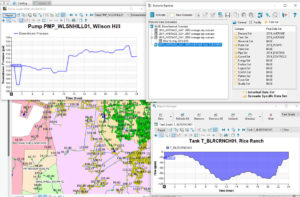
Benefits of a Water Model
As cities and communities around the country continue grow, many local water departments and utilities are faced with challenges, particularly as it relates to infrastructure. The challenge of significant growth will be most felt by those that are the sole water provider for an area. Fortunately, technology has continued to advance and water modeling software has been developed that allows utility districts access to information regarding their distribution system. This data can provide insights into the health and condition of their equipment, processes, and systems. To get the most meaningful use from a water model, it must be structured, stored, and analyzed to support operation and maintenance decisions to improve their overall water infrastructure. The creation and calibration of a hydraulic water model is one of the best tools available to water departments to drive proactive and intelligent decisions for their systems.
Capabilities of Water Modeling
- Perform Analyses to Aid in Decision Making – Easily develop and compare what-if scenarios such as identifying the most efficient pump operation strategies, impactful incident response actions, master planning build-out options, and cost-effective design alternatives. A model can be used to easily switch between scenarios to fine tune operations under certain system conditions.
- Analyze Water Quality – Simulate the movement, concentration, and fate of water quality constituents (such as chlorine and fluoride residuals) as they travel through the system network.
- Model Unidirectional Flushing Programs – Develop fire hydrant flushing sequences to ensure that water is delivered to the consumer’s tap with minimum degradation in quality and free of color and sediment.
- Prepare Emergency Response Plans and Consequence Management – Estimate the consequences of a crisis, as well as formulate and evaluate response and recovery plans.
- Model the propagation of naturally, accidentally, or intentionally introduced contaminants.
- Calculate and notify populations at risk.
- Identify the source(s), decide how to isolate the event and compute required purging water volume.
- Determine the impact on fire-fighting capabilities.
Additional Benefits
- Informed Decision Making – Similar to water distribution modeling, what-if scenarios can be easily developed and compared. These can be used to identify the best pump operation strategies, most impactful incident response actions, master planning build-out options, cost-effective design alternatives, and much more. Switching between scenarios and comparing modeling results instantly is easy.
- Sewer and Storm Sewer Overflow Analysis – Reduce the chance of being caught off guard by Combined Sewer Overflows (CSOs) or Sanitary Sewer Overflows (SSOs).
- Protect Water Quality – Cities can protect their bodies of water by modeling pollution buildup during rain events and develop treatment options to keep storm runoff from polluting the waters.
Practical experience relating models to existing facilities and providing a one-to-one relationship is what we strive to accomplish. Our modelers specialize in integrating GIS with models, and work closely with field engineers, operators, and designers to bridge the gap between models and a utilities’ system. Hydraulic modeling is the best way to maximize one’s investment in GIS and better understand the characteristics of a system and improve on the design, which in return, helps improve the system’s long-term performance.
Future blog posts will take a deeper dive into the capabilities and benefits of water modeling. If you have a specific topic you’d like our team of engineers and experts to cover, email info@ssr-inc.com.










